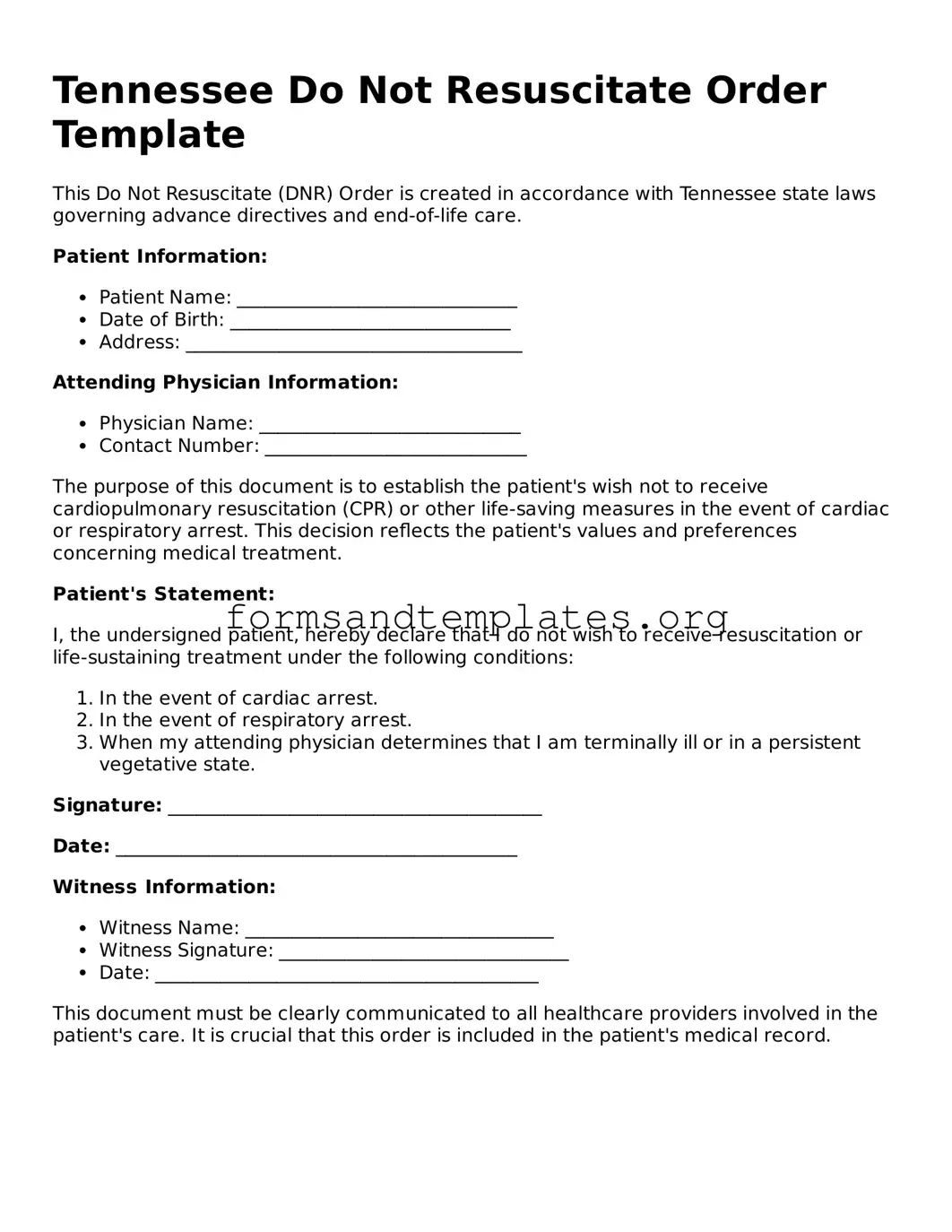Tennessee Do Not Resuscitate Order Template
This Do Not Resuscitate (DNR) Order is created in accordance with Tennessee state laws governing advance directives and end-of-life care.
Patient Information:
- Patient Name: ______________________________
- Date of Birth: ______________________________
- Address: ____________________________________
Attending Physician Information:
- Physician Name: ____________________________
- Contact Number: ____________________________
The purpose of this document is to establish the patient's wish not to receive cardiopulmonary resuscitation (CPR) or other life-saving measures in the event of cardiac or respiratory arrest. This decision reflects the patient's values and preferences concerning medical treatment.
Patient's Statement:
I, the undersigned patient, hereby declare that I do not wish to receive resuscitation or life-sustaining treatment under the following conditions:
- In the event of cardiac arrest.
- In the event of respiratory arrest.
- When my attending physician determines that I am terminally ill or in a persistent vegetative state.
Signature: ________________________________________
Date: ___________________________________________
Witness Information:
- Witness Name: _________________________________
- Witness Signature: _______________________________
- Date: _________________________________________
This document must be clearly communicated to all healthcare providers involved in the patient's care. It is crucial that this order is included in the patient's medical record.
